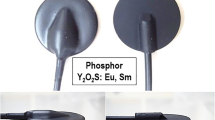Abstract
Many studies have reported that a patient can move even when an immobilization device is used. Researchers have developed an immobilization-device quality-assurance (QA) system that evaluates the validity of immobilization devices. The QA system consists of force-sensing-resistor (FSR) sensor units, an electric circuit, a signal conditioning device, and a control personal computer (PC) with in-house software. The QA system is designed to measure the force between an immobilization device and a patient’s skin by using the FSR sensor unit. This preliminary study aimed to evaluate the feasibility of using the QA system in radiation-exposure situations. When the FSR sensor unit was irradiated with a computed tomography (CT) beam and a treatment beam from a linear accelerator (LINAC), the stability of the output signal, the image artifact on the CT image, and changing the variation on the patient’s dose were tested. The results of this study demonstrate that this system is promising in that it performed within the error range (signal variation on CT beam < 0.30 kPa, root-mean-square error (RMSE) of the two CT images according to presence or absence of the FSR sensor unit < 15 HU, signal variation on the treatment beam < 0.15 kPa, and dose difference between the presence and the absence of the FSR sensor unit < 0.02%). Based on the obtained results, we will volunteer tests to investigate the clinical feasibility of the QA system.
Similar content being viewed by others
References
S. Jeong, J. H. Lee, M. J. Chung, S. W. Lee, J. W. Lee, D. G. Kang and S. H. Kim, Medicine 95, 1 (2016).
I. Lax, H. Blomgren, I. Naslund and R. Svanstrom, Acta Oncol. 33, 677 (1994).
Y. E. Ko, Y. Suh, S. D. Ahn, S. W. Lee, S. S. Shin, J. H. Kim, E. K. Choi and B. Y. Yi, Med. Phys. 32, 3363 (2005).
Y. Negoro et al., Int. J. Radiat. Oncol. Biol. Phys. 50, 889 (2001).
B. Murray, K. Forster and R. Timmerman, Med. Dosim. 32, 86 (2007).
C. Mitine, M. T. Hoornaert, A. Dutreix and M. Beaduin, Radiother. Oncol. 52, 19 (1999).
B. G. Baumert, O. Zagralioglu, J. B. Davis, B. Reiner, U. M. Luetolf and I. F. Ciernik Radiother. Oncol. 65, 47 (2002).
J. L. Barker et al., Int. J. Radiat. Oncol. Biol. Phys. 59, 960 (2004).
H. T. Barkley and G. H. Fletcher, Radiology 124, 493 (1977).
S. Sobel, P. Rubin, B. Keller and C. Poulter, Int. J. Radiat. Oncol. Biol. Phys. 1, 873 (1976).
N. K. Rana, ICCEE’09, Second International Conference on Computer and Electrical Engineering 2, 678 (2009).
W. Y. Shieh, C. M. Wang, and C. S. Chang, Sensors 15, 12428 (2015).
T. Kim, S. Kang, D. Kim, M. Cho, K. Kim and T. Suh, J. Korean Phys. Soc. 67, 199 (2015).
Author information
Authors and Affiliations
Corresponding author
Rights and permissions
About this article
Cite this article
Cho, MS., Kim, TH., Kang, SH. et al. A noble technique a using force-sensing resistor for immobilization-device quality assurance: A feasibility study. Journal of the Korean Physical Society 68, 803–809 (2016). https://doi.org/10.3938/jkps.68.803
Received:
Accepted:
Published:
Issue Date:
DOI: https://doi.org/10.3938/jkps.68.803




